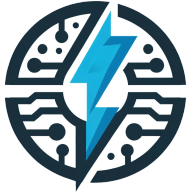Welcome to a deep dive into the world of power systems and distribution. This comprehensive guide will shed light on the complexities of power systems, their design, operation, and the critical role they play in our daily lives. We will also explore the distribution aspect, which ensures the seamless delivery of electricity from power plants to end users. So, buckle up for an electrifying journey into the heart of power systems and distribution.
Understanding the Basics of Power Systems
Power systems form the backbone of modern civilization. They are complex networks that generate, transmit, and distribute electrical power to consumers. The primary components of a power system include power plants, transmission lines, substations, and distribution lines.
Power plants generate electricity using various energy sources such as coal, natural gas, nuclear energy, or renewable sources like wind and solar. The generated power then travels through high-voltage transmission lines. Substations play a crucial role in stepping down the voltage for distribution to residential, commercial, and industrial consumers.
Power systems are designed to ensure a reliable and continuous supply of electricity. They are interconnected, forming a power grid that allows for power exchange and provides redundancy. In case of a failure in one part of the grid, power can be rerouted from other areas to prevent blackouts.
The Role of Power Distribution
Power distribution is the final stage in the delivery of electricity from power plants to end users. It involves reducing the high voltage from transmission lines to a level suitable for use in homes and businesses. This process takes place in distribution substations.
Distribution lines carry this lower voltage electricity to consumers. These lines are a common sight in our neighborhoods, either overhead or underground. Transformers located near or on consumers' premises further reduce the voltage to a level safe for use in our appliances.
Power distribution systems must be robust and flexible. They should be capable of handling varying demand loads and maintaining voltage stability. They also need to quickly isolate faults to prevent widespread power outages.
Challenges in Power Systems and Distribution
Power systems and distribution face numerous challenges. The increasing demand for electricity, driven by population growth and industrialization, puts immense pressure on these systems. They must be capable of meeting this demand while maintaining reliability and stability.
The integration of renewable energy sources into the power grid also presents challenges. These energy sources are often intermittent and unpredictable, requiring sophisticated control and management systems.
Aging infrastructure is another significant issue. Many power systems around the world are decades old and not designed to handle today's electricity demand. Upgrading these systems is a costly and time-consuming process.
The Future of Power Systems and Distribution
The future of power systems and distribution is exciting. Technological advancements are paving the way for smarter, more efficient, and more resilient power grids.
Smart grids, which use digital technology to monitor and manage electricity flow, are becoming increasingly common. They can detect and respond to changes in electricity demand, improving efficiency and reducing power outages.
The integration of renewable energy sources is also expected to increase. This shift towards cleaner energy sources will reduce the environmental impact of power generation and make power systems more sustainable.
The Role of Consumers in Power Systems and Distribution
Consumers play a crucial role in power systems and distribution. Their usage patterns directly affect the operation of these systems. By managing their electricity use, consumers can reduce peak demand and contribute to the stability of the power grid.
The advent of smart meters has empowered consumers to monitor their electricity consumption in real-time. These devices also allow for two-way communication between consumers and utility companies, enabling demand response programs.
In the future, consumers could also become producers of electricity. The increasing adoption of rooftop solar panels and other small-scale renewable energy systems, known as distributed generation, is transforming consumers into 'prosumers' – both producers and consumers of electricity.
The Importance of Power Systems and Distribution in Society
Power systems and distribution are vital to society. They power our homes, businesses, and industries, enabling modern life as we know it. Without reliable power systems and distribution, our daily routines, economy, and even safety would be compromised.
These systems also play a crucial role in addressing climate change. By transitioning to renewable energy sources and improving energy efficiency, power systems can significantly reduce greenhouse gas emissions.
The importance of power systems and distribution is only set to increase as we become more reliant on electricity in our daily lives. Ensuring their reliability, efficiency, and sustainability is therefore of paramount importance.
Wrapping Up: The Power Behind Power Systems and Distribution
Power systems and distribution are complex yet fascinating. They ensure the seamless delivery of electricity from power plants to our homes and businesses. Despite the challenges they face, advancements in technology and changes in consumer behavior are driving their evolution. As we move towards a more electrified and sustainable future, the importance of understanding power systems and distribution cannot be overstated.

